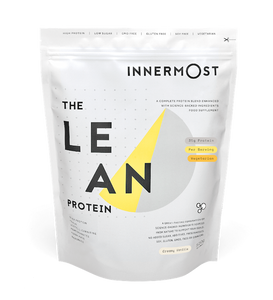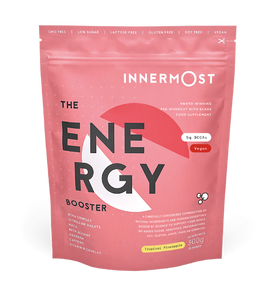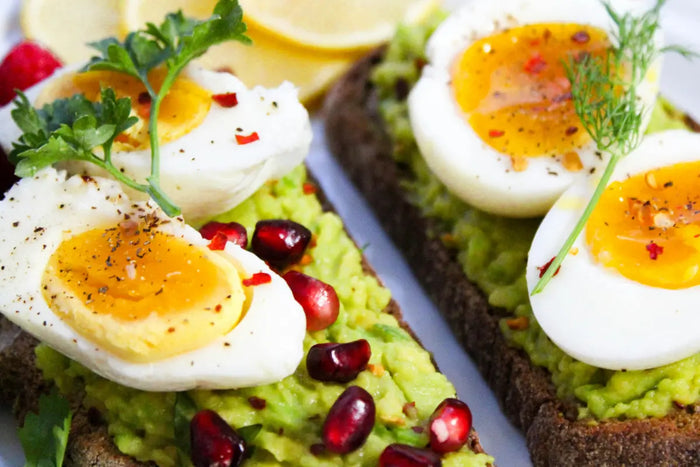Top athletes are some of the more elite performers there are. They perform in public again and again, pushing their bodies and minds to the absolute limit in pursuit of a world record, a team goal or a personal best.
Performing at such a high level can be mentally taxing, especially when you’re at the Olympics or other high-calibre competitions. To deal with this and to perform at their best, professional athletes use a variety of techniques to keep their head in the game, maximise mental acuity and generally set themselves up for the performance of a lifestyle every time they run, swim, fight or play.
While we might not be top athletes paid to participate in a sport (although when you use Innermost products such as The Power Booster, which increases your strength and speed, and The Fit Protein, a protein blend designed for people who regularly push themselves further than most but refuse to let that compromise their performance, you’re definitely on the right path), you can still benefit from the secret techniques athletes use to get themselves to perform amazing.
Find a positive mindset
Muhammad Ali is considered to be the greatest boxer of all time, and had to face some trying matches in his time. How did he get through the stress? He was famous for saying ‘I am the greatest’, a phrase he began repeating to himself long before he found success. He believed in his own abilities, and by telling himself so, he made it come true. Why don’t you try doing the same?
You’re not nervous, you’re excited
It’s all about finding the right angle. What if, when you’re shaking with nerves before the start of a big race you’re running, you told yourself that instead of being scared you were excited? This is a tactic used by track cyclist Sir Chris Hoy, Britain’s most decorated Olympian with six gold medals. He said: ‘Never use the words nervous or anxious, use the words exciting and adrenalised.’

Accept failure
While failure might seem scary, if you’ve never failed then you’ve also never pushed past your comfort zone. When you fail, you rebuild stronger and better than before - it’s one of the best character-builders out there. Once you’ve failed and grown from the failure, you learn that it’s nothing to be scared off. By putting the fear behind you, you leave your mind clear to concentrate on pushing yourself beyond your limits, rather than being held back by irrational anxieties.
Visualise, visualise, visualise
When you succeed at the sport or exercise you love, you feel amazing both inside and out. By holding on to that feeling and using it as a weapon against your own insecurities, you can beat your mind at its own game (of trying to psych you out, that is).
Athletes such as Tiger Woods and Chuck Liddell utilise this technique, drawing on memories of times they were successful. As well as remembering the actions you took, such as the arc of a perfect golf club swing, they remember what they felt like inside their minds at that winning moment. By holding that feeling inside you, you can use the energy from it to repeat the successful action again and again.
Dina Asher-Smith, the fastest British woman in recorded history, uses this performance secret to win her races - because she’s already raced in her mind and succeeded. She said: ‘I might visualise the final...I run through it as if I'm running it. It's quite fun. You kind of have to win or else there's no point.’
Ask for help
Yes, you’re the person who’s dragging yourself out of bed at 5am every morning to get to the gym before the sun comes up. But you’re not the only one making your success happen. There’s your partner, who listens to you talk endlessly about weights and cycling times over dinner, your friends, who come to your races to cheer as you cross the finish lines, your trainer, who gives you encourage when you need it the most and even the cleaners at your gym who keep the changing rooms spic and span, enabling you to take a welcome hot shower after a a sweaty bout on the treadmill.
A great example of this is when Kenyan long-distance runner Eliud Kipchoge broke the two-hour marathon record in 2019. It might have been his feet hitting the pavement, but he had assistance from 41 pacemakers as well as the thousands of supporters who came to the event to cheer from the crowd. In fact, Kipchoge even asked the general public to come to the event because he knew he would run better with their support. Don’t be afraid to lean on your network when you need to - that’s what they’re there for.
Don’t cave into pressure
Finally, a tip from Maggie Alphonsi MBE, who has represented England for rugby no less than 74 times. She said: ‘My biggest tip for holding your nerve under pressure is to attack it head on. Don't fear it but thrive on the pressure. To know people expect great things from me is an amazing feeling and I use that to block out any nerves I have. I also remind myself that I've done all the hard work to get to this point so I will be fine.’

















